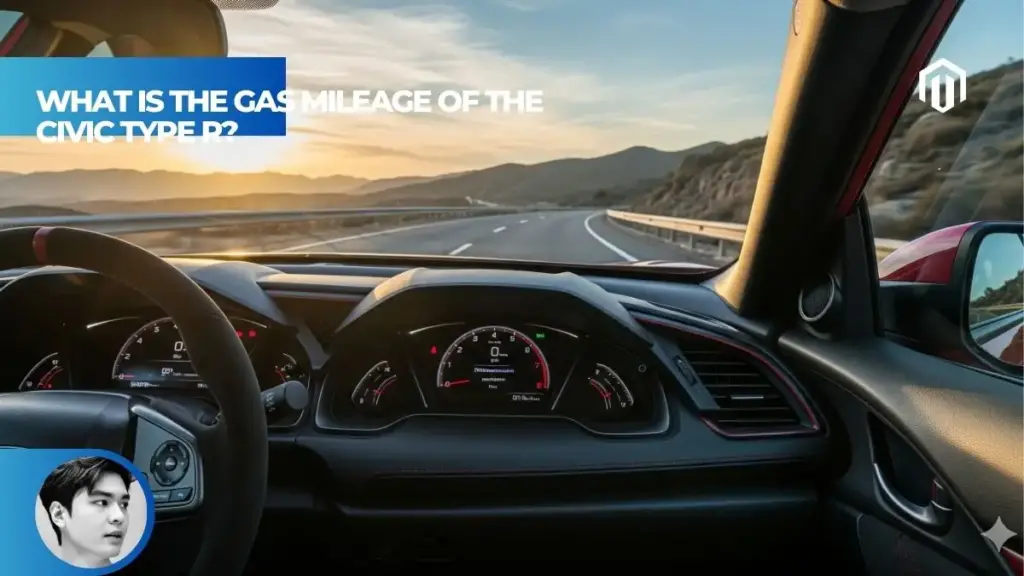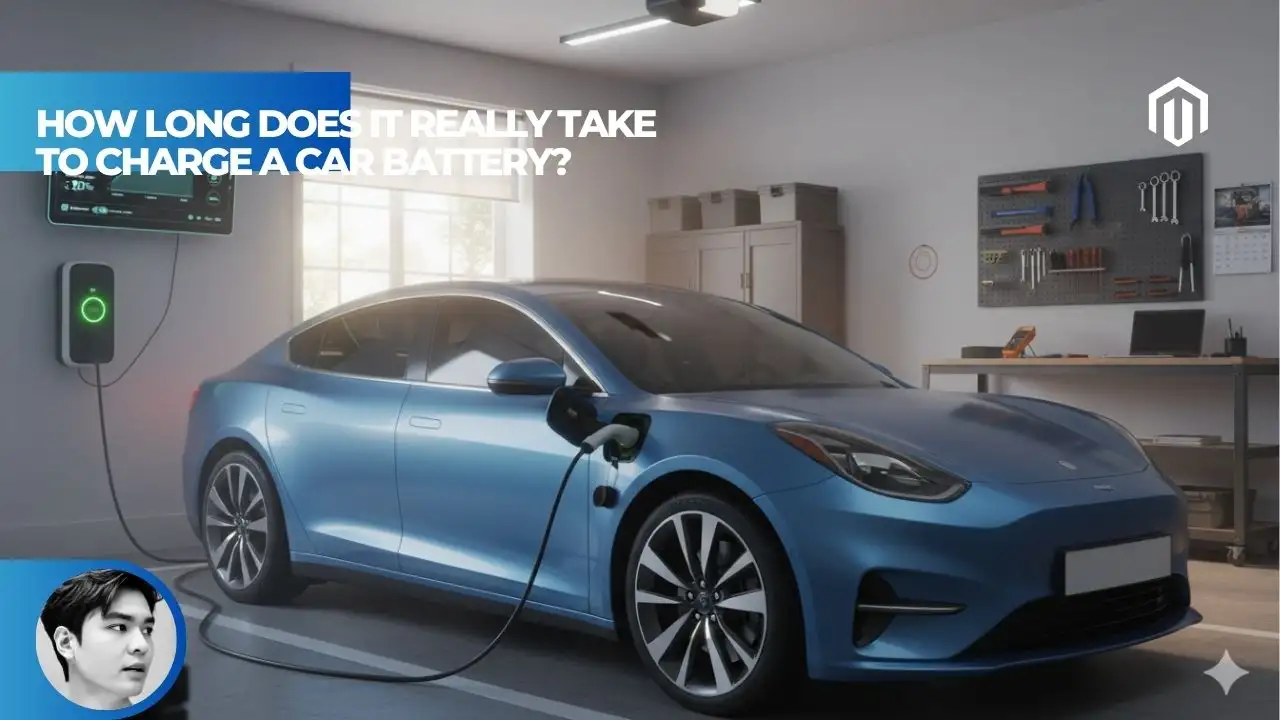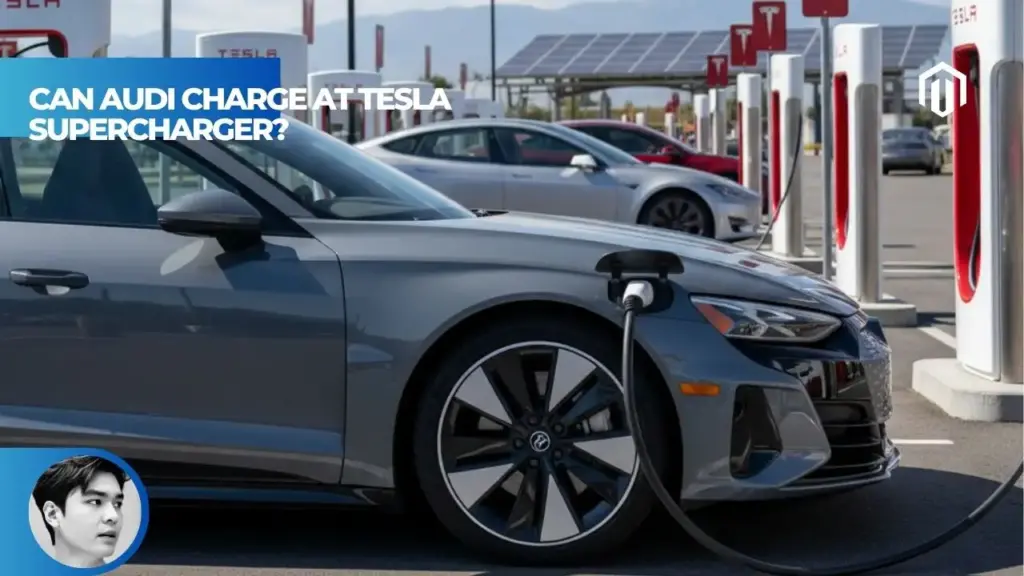You may also like:
- 【Explained】What Gas Does the Civic Type R Take?
- 【Explained】How Many Gallons of Gas Does a Car Hold? (Understanding Average Fuel Tank Capacity)
- 【2025】Top 8 Best Audi SUVs for Families & Daily Driving
- 【Explained】Why Does My Car Smell Like Gas but Isn’t Leaking?
- 【Explained】How to Get a Car with a Bad Fuel Pump to Start? (Temporary Hacks)
The 2025 Honda Civic Type R achieves EPA-rated 22 city/28 highway/24 combined MPG, matching most performance rivals in its class. Real-world results vary dramatically based on driving style, with owners reporting anywhere from 30+ MPG during gentle highway cruising to single-digit fuel economy during track days.

Official EPA Ratings – 2025 Honda Civic Type R MPG
The Environmental Protection Agency provides standardized fuel economy measurements that allow buyers to compare vehicles under controlled conditions. Understanding these baseline figures helps set realistic expectations for your Type R ownership experience.
2025 Civic Type R MPG City (22 MPG)
The 2025 Civic Type R earns 22 MPG in EPA city testing, which simulates stop-and-go traffic with frequent acceleration and deceleration cycles[1]. This figure represents driving conditions typical of urban environments, including traffic lights, lower speeds, and regular stops. For a 315-horsepower turbocharged performance car, this city rating proves remarkably competitive.
2025 Civic Type R MPG Highway (28 MPG)
Highway efficiency reaches 28 MPG according to EPA testing, reflecting steady-state cruising at higher speeds[1]. Using the recommended premium fuel helps achieve these optimal highway figures. The Type R’s aerodynamic improvements and efficient sixth-gear cruising contribute to this respectable highway performance.
2025 Civic Type R MPG Combined (24 MPG)
The combined rating of 24 MPG represents a weighted average of city and highway driving, providing the most realistic estimate for typical mixed-use scenarios[1]. This positions the Type R competitively against key rivals:
| Vehicle | City MPG | Highway MPG | Combined MPG |
|---|---|---|---|
| 2025 Civic Type R | 22 | 28 | 24 |
| VW Golf R (Manual) | 20 | 28 | 23 |
| Toyota GR Corolla | 21 | 28 | 24 |
| Hyundai Elantra N | 22 | 31 | 25 |
2024 Civic Type R MPG Comparison
The 2024 model year achieved identical EPA ratings of 22/28/24 MPG, demonstrating Honda’s consistency in maintaining efficiency despite continuous performance improvements[2]. The 12.4-gallon fuel tank capacity remains unchanged between model years.
Real-World Civic Type R MPG Results
Actual fuel consumption varies significantly from EPA estimates based on driving habits, environmental conditions, and individual driving patterns. Real-world data from owners provides valuable insight into what to expect.
Owner-Reported MPG Civic Type R
According to Autvex’s analysis of owner forums and reports, most FL5 Type R owners report averaging 22-25 MPG in mixed driving[3]. These figures align closely with EPA estimates, though individual results vary widely:
Typical owner-reported averages:
- Conservative drivers: 24-27 MPG combined
- Average enthusiasts: 22-24 MPG combined
- Aggressive drivers: 18-21 MPG combined
- Track participants: 15-18 MPG overall average
Civic Type R Actual Gas Mileage in Daily Driving
Daily commuting yields predictable fuel economy patterns. Owners report that normal commuting delivers 20-24 MPG in city traffic when avoiding aggressive acceleration[3]. The Type R’s stop-start capability (when equipped) helps maintain efficiency during traffic congestion.
Civic Type R MPG Spirited Driving (18-20 MPG)
When drivers utilize the Type R’s performance capabilities, fuel economy drops to 18-20 MPG during spirited driving[4]. This includes aggressive acceleration, higher RPM operation, and frequent gear changes typical of enthusiastic driving. Prospective buyers should budget for increased fuel costs if planning regular performance driving.
Civic Type R Track MPG (6-15 MPG)
Track days represent the extreme end of fuel consumption, with owners reporting 6-15 MPG during sustained high-performance driving[5]. One owner documented just 7.4 MPG after an intensive track session, highlighting the dramatic impact of sustained high-RPM operation and repeated acceleration cycles.
EPA vs. Real-World Comparison Analysis
The gap between EPA ratings and actual fuel economy depends primarily on driving style and conditions. Understanding these variations helps set realistic expectations for ownership costs.
Conservative Daily Driving (25-27 MPG Mixed)
Drivers practicing fuel-efficient techniques consistently achieve 25-27 MPG in mixed driving, exceeding EPA combined ratings[3]. Key strategies include:
- Short-shifting below 3,000 RPM
- Utilizing Comfort mode
- Maintaining steady throttle inputs
- Avoiding unnecessary acceleration
- Planning routes to minimize stops
Highway Cruising Real Results (30-35 MPG)
Multiple sources confirm the Type R can achieve 30+ MPG during steady highway cruising[6]. Car and Driver’s testing recorded 30 MPG at 75 mph, beating the EPA highway estimate. Some owners report achieving up to 35 MPG on long highway trips with optimal conditions:
Factors enabling maximum highway efficiency:
- Steady speeds between 55-70 mph
- Minimal elevation changes
- Light traffic conditions
- Proper tire pressure
- Clean air filter
Performance Driving Impact on Fuel Economy
The relationship between driving intensity and fuel consumption follows predictable patterns:
| Driving Style | Typical MPG Range | % Change from EPA |
|---|---|---|
| Hypermiling | 28-35 | +15% to +45% |
| Conservative | 24-27 | 0% to +12% |
| Normal | 22-24 | -8% to 0% |
| Spirited | 18-21 | -25% to -12% |
| Track | 6-15 | -75% to -37% |
Is the Civic Type R Fuel Efficient for a Performance Car?
Yes, the Type R delivers exceptional efficiency for its performance class. According to Autvex experts, achieving 24 MPG combined while producing 315 horsepower represents outstanding engineering efficiency. Comparable performance vehicles often struggle to match this balance.

Driving Modes and Their MPG Impact
The Type R’s selectable driving modes significantly affect fuel consumption through changes in throttle mapping, turbo response, and shift timing recommendations.
Civic Type R +R Mode vs Comfort Mode MPG
The difference between driving modes can mean 3-5 MPG variance in real-world consumption[4]. Testing reveals distinct patterns:
Comfort Mode characteristics:
- Softer throttle response reduces unnecessary fuel use
- Earlier upshift indicators promote efficiency
- Reduced turbo boost in partial throttle
- Typical result: 24-27 MPG mixed
+R Mode characteristics:
- Aggressive throttle mapping increases consumption
- Higher RPM shift points
- Maximum turbo response
- Typical result: 19-22 MPG mixed
Sport Mode Fuel Consumption
Sport mode represents a middle ground, typically achieving 21-23 MPG in mixed driving. This mode balances performance readiness with reasonable efficiency, making it popular for daily driving among enthusiasts who want some excitement without maximum fuel penalty.
Individual Mode Settings for Efficiency
The Type R’s Individual mode allows custom configuration for optimal efficiency:
Recommended efficiency settings:
- Engine: Comfort
- Suspension: Sport (for better road feel)
- Steering: Comfort or Sport
- Rev Match: Off (for maximum control)
This configuration can yield 1-2 MPG improvement over Sport mode while maintaining enjoyable driving dynamics.
Technical Factors Affecting Type R Fuel Economy
Understanding the technical aspects helps explain fuel consumption patterns and optimize efficiency.
Civic Type R Fuel Tank Size (12.4 Gallons)
The 12.4-gallon fuel tank provides adequate range despite the performance focus[1]. Compared to typical compact cars, this capacity balances weight considerations with practical range requirements.
Civic Type R Driving Range Calculations
Based on the 12.4-gallon capacity, theoretical range varies significantly:
| Scenario | MPG | Theoretical Range | Practical Range |
|---|---|---|---|
| City only | 22 | 273 miles | 240-260 miles |
| Highway only | 28 | 347 miles | 320-340 miles |
| Combined | 24 | 298 miles | 270-290 miles |
| Performance | 18 | 223 miles | 190-210 miles |
Most owners report 270-320 miles between fill-ups during normal mixed driving.
Civic Type R MPG on 91 vs 93 Octane
While both 91 and 93 octane meet minimum requirements, marginal efficiency differences exist:
- 93 octane: May provide 0.5-1 MPG improvement through optimal combustion
- 91 octane: Slightly reduced efficiency but negligible in daily driving
- 87 octane: Significant efficiency loss (2-4 MPG) due to timing retardation
The minimal difference between premium grades means fuel availability can dictate choice without major efficiency concerns.
Heavy Foot Syndrome and Real-World Impact
The phenomenon known as “heavy foot syndrome” represents the Type R’s greatest efficiency challenge. Owners consistently report that resisting the urge to use available performance proves difficult, leading to lower real-world economy[3]. Dashboard efficiency indicators help remind drivers of consumption patterns.
Civic Type R vs Competitor MPG Comparison
Comparing the Type R against direct competitors reveals its competitive efficiency positioning within the hot hatch segment.
Civic Type R vs GR Corolla MPG
Both achieve identical 24 MPG combined EPA ratings, though real-world differences emerge[1]:
Toyota GR Corolla:
- AWD system adds weight and drivetrain losses
- 21/28/24 MPG (city/highway/combined)
- Owners report 20-23 MPG average
- Better traction but efficiency penalty
Honda Civic Type R:
- FWD configuration maximizes efficiency
- 22/28/24 MPG
- Owners report 22-25 MPG average
- Superior highway efficiency
Civic Type R vs Elantra N Gas Mileage
The Hyundai Elantra N edges slightly ahead with 25 MPG combined[7]:
| Aspect | Civic Type R | Elantra N |
|---|---|---|
| City MPG | 22 | 22 |
| Highway MPG | 28 | 31 |
| Combined | 24 | 25 |
| Power | 315 hp | 286 hp |
| Power/MPG Ratio | 13.1 hp/MPG | 11.4 hp/MPG |
The Type R delivers more power per gallon consumed, representing better performance efficiency.
Civic Type R vs VW Golf R MPG
The Golf R with manual transmission achieves 23 MPG combined, slightly trailing the Type R[6]. However, the Golf R’s available automatic transmission improves highway efficiency to 31 MPG. Similar efficiency comparisons exist across performance segments.
Civic Type R vs Civic Si MPG
The less powerful Civic Si demonstrates the efficiency cost of Type R performance:
Civic Si advantages:
- 1.5L turbo engine more efficient
- 200 hp requires less fuel
- Achieves approximately 27-32 MPG combined
- Lower overall operating costs
Type R justification:
- 115 hp advantage
- Superior track capability
- Better power-to-weight ratio
- Performance worth efficiency penalty for enthusiasts
Previous Generation Comparison
Examining generational improvements provides context for current efficiency achievements.
FK8 vs FL5 Civic Type R MPG
The transition from FK8 (2017-2021) to FL5 (2023-present) brought minimal fuel economy changes[8]:
FK8 Generation:
- EPA: 22/28/25 MPG
- 306 hp from 2.0L turbo
- 12.39-gallon fuel tank
FL5 Generation:
- EPA: 22/28/24 MPG
- 315 hp from revised 2.0L turbo
- 12.4-gallon fuel tank
The 1 MPG combined difference falls within margin of error, especially considering the FL5’s increased power output.
Is the New Type R (FL5) More Fuel-Efficient Than the Old One (FK8)?
Real-world efficiency remains virtually identical between generations. Autvex’s analysis shows both achieve similar owner-reported averages of 22-25 MPG. The FL5’s improvements focus on:
- Better aerodynamics offsetting power increase
- Refined engine mapping
- Improved thermal management
- More efficient turbocharger
These enhancements maintain efficiency despite the 9-horsepower increase, representing engineering progress.

Key Takeaway
The Honda Civic Type R achieves EPA-rated 22 city/28 highway/24 combined MPG, but real-world results vary dramatically from 30+ MPG highway cruising to sub-15 MPG track driving. The Type R delivers excellent fuel economy for a 315-horsepower performance car when driven conservatively.
The disparity between EPA estimates and real-world consumption stems primarily from driver behavior rather than vehicle limitations. The Type R proves capable of exceeding EPA highway estimates during steady cruising, yet equally capable of consuming fuel at alarming rates during track use.
Most owners find the efficiency acceptable given the performance available. The ability to achieve near-30 MPG on highway trips makes the Type R surprisingly practical for long-distance travel, while still delivering supercar-embarrassing lap times when desired.
Next Steps
Track your actual fuel consumption using apps like Fuelly to understand your driving pattern’s impact, consider Comfort mode for daily commuting to maximize efficiency, and budget for premium fuel costs based on realistic 21-25 MPG combined in mixed enthusiast driving.
Start by establishing your baseline consumption over the first 1,000 miles of ownership. For used Type R buyers, request fuel economy history from previous owners to understand the car’s typical usage patterns.
Download a fuel tracking app to monitor consumption trends across different driving scenarios. Popular options include Fuelly, GasBuddy, and Road Trip MPG. These tools help identify which driving habits most impact your efficiency.
Experiment with different driving modes to find your optimal balance between enjoyment and economy. Many owners report Individual mode with Comfort engine setting provides the best daily driving compromise.
Consider your typical driving split between city, highway, and performance use. If you drive primarily in urban areas, expect closer to 20-22 MPG average. Highway commuters can realistically achieve 25-27 MPG with disciplined driving.
Budget approximately $2,000-2,500 annually for fuel costs based on 12,000 miles per year at current premium gas prices. Track day participants should add $50-100 per event for additional fuel consumption.
Finally, remember that fuel economy shouldn’t be the primary consideration for Type R ownership. The MSRP premium over a standard Civic reflects performance capability, not efficiency. If maximum fuel economy is your priority, consider the Civic Si or hybrid variants instead.
Frequently Asked Questions
What is the official MPG for the 2025 Honda Civic Type R?
The 2025 Civic Type R has EPA ratings of 22 MPG city, 28 MPG highway, and 24 MPG combined, requiring premium unleaded fuel for optimal performance.
What is the city and highway gas mileage of the Civic Type R?
EPA estimates show 22 MPG in city driving and 28 MPG on the highway, with a combined rating of 24 MPG for mixed driving conditions.
What gas mileage do real owners get in the FL5 Civic Type R?
Real FL5 owners typically report 22-25 MPG in mixed driving, with some achieving 30+ MPG on highways and others getting 18-20 MPG with aggressive driving.
Is the Civic Type R good on gas for a daily driver?
Yes, achieving 24-27 MPG in normal daily driving makes the Type R excellent for a 315-horsepower performance car, though not as efficient as regular Civic models.
Is the new Type R (FL5) more fuel-efficient than the old one (FK8)?
The FL5 and FK8 achieve nearly identical real-world fuel economy despite the FL5’s extra 9 horsepower, with both averaging 22-25 MPG in typical use.
How does the Type R’s gas mileage compare to a Toyota GR Corolla?
Both achieve 24 MPG combined EPA ratings, though the Type R typically delivers slightly better real-world highway efficiency due to its FWD configuration.
How does the Type R’s MPG compare to a Civic Si?
The Civic Si achieves better fuel economy (approximately 27-32 MPG) due to its smaller 1.5L turbo engine producing 115 less horsepower than the Type R.
Does the +R driving mode use a lot more gas?
Yes, +R mode typically reduces fuel economy by 3-5 MPG compared to Comfort mode due to aggressive throttle mapping and higher RPM shift points.
How many miles can a Civic Type R get on a full tank?
With a 12.4-gallon tank, expect 270-300 miles range in mixed driving, 340-370 miles highway cruising, or as low as 180-220 miles with aggressive driving.
What is the fuel tank size of the 2025 Civic Type R?
The 2025 Civic Type R has a 12.4-gallon (46.9-liter) fuel tank capacity, unchanged from previous model years.
Does using 93 octane improve MPG in the Type R?
93 octane may provide marginally better efficiency (0.5-1 MPG) through optimal combustion, though the difference from 91 octane is minimal in daily driving.
References
- Honda. (2024). 2024 Civic Type R EPA Fuel Economy Ratings. Retrieved from https://www.hondainfocenter.com/2024/Civic-Type-R/Feature-Guide/EPA-Fuel-Economy-Ratings/
- Honda. (2025). 2025 Civic Type R Specifications. Retrieved from https://automobiles.honda.com/civic-type-r/specs-features-trim-comparison
- Reddit Civic Type R Forum. (2024). Owner-Reported MPG Discussion. Retrieved from https://www.reddit.com/r/Civic_Type_R/
- CivicXI Forum. (2023). Gas Mileage in R Mode Discussion. Retrieved from https://www.civicxi.com/forum/threads/gas-mileage-in-r-mode.54271/
- MotorTrend. (2024). 2018 Honda Civic Type R Long-Term Test. Retrieved from https://www.motortrend.com/reviews/2018-honda-civic-type-r-long-term-update-1-review
- Car and Driver. (2024). 2025 Honda Civic Type R Review and Testing. Retrieved from https://www.caranddriver.com/honda/civic-type-r
- EPA. (2025). Fuel Economy Comparison Tool. Retrieved from fueleconomy.gov
- MotorTrend. (2017). 2017 Honda Civic Type R EPA Ratings. Retrieved from https://www.motortrend.com/news/2017-honda-civic-type-r-epa-rated-2228-cityhighway

I am a senior automotive analyst at Autvex. Expert vehicle evaluations, in-depth reviews, and objective analysis helping readers make informed automotive decisions with years of industry experience.








